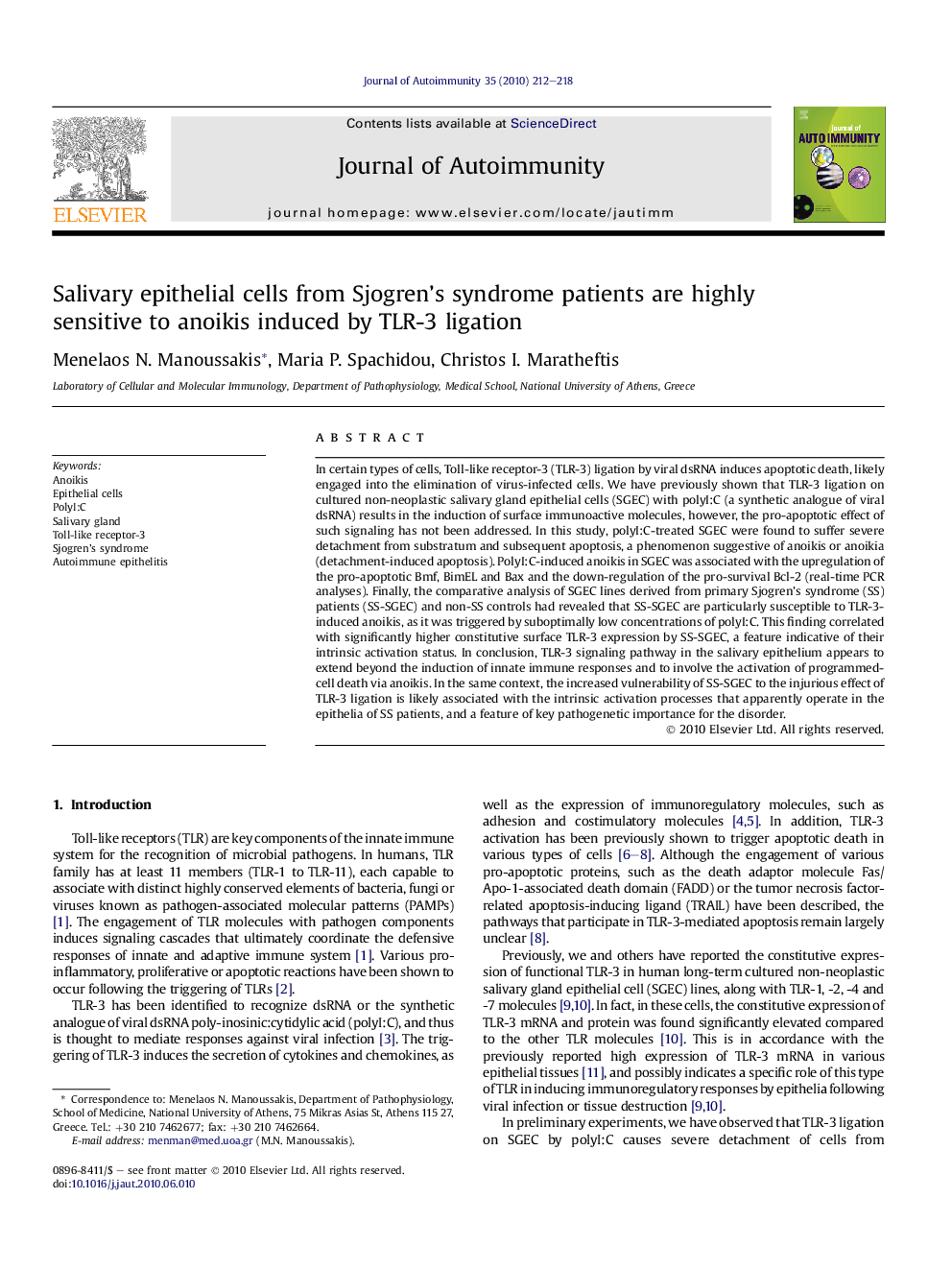| Article ID | Journal | Published Year | Pages | File Type |
|---|---|---|---|---|
| 3368059 | Journal of Autoimmunity | 2010 | 7 Pages |
In certain types of cells, Toll-like receptor-3 (TLR-3) ligation by viral dsRNA induces apoptotic death, likely engaged into the elimination of virus-infected cells. We have previously shown that TLR-3 ligation on cultured non-neoplastic salivary gland epithelial cells (SGEC) with polyI:C (a synthetic analogue of viral dsRNA) results in the induction of surface immunoactive molecules, however, the pro-apoptotic effect of such signaling has not been addressed. In this study, polyI:C-treated SGEC were found to suffer severe detachment from substratum and subsequent apoptosis, a phenomenon suggestive of anoikis or anoikia (detachment-induced apoptosis). PolyI:C-induced anoikis in SGEC was associated with the upregulation of the pro-apoptotic Bmf, BimEL and Bax and the down-regulation of the pro-survival Bcl-2 (real-time PCR analyses). Finally, the comparative analysis of SGEC lines derived from primary Sjogren’s syndrome (SS) patients (SS-SGEC) and non-SS controls had revealed that SS-SGEC are particularly susceptible to TLR-3-induced anoikis, as it was triggered by suboptimally low concentrations of polyI:C. This finding correlated with significantly higher constitutive surface TLR-3 expression by SS-SGEC, a feature indicative of their intrinsic activation status. In conclusion, TLR-3 signaling pathway in the salivary epithelium appears to extend beyond the induction of innate immune responses and to involve the activation of programmed-cell death via anoikis. In the same context, the increased vulnerability of SS-SGEC to the injurious effect of TLR-3 ligation is likely associated with the intrinsic activation processes that apparently operate in the epithelia of SS patients, and a feature of key pathogenetic importance for the disorder.
